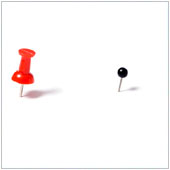 Brick and mortar stores are dying a slow death. This is especially true for smaller operations. The reason for this? The Internet. Traditionally, small to medium businesses were limited to the areas where they had offices. Now, thanks to the Internet, you can sell your products to anyone, anywhere. This ‘e-commerce’ has become an integral part of business and with it, marketing your products and services to those online. One way companies do this is through social networks, and one platform that is proving to be fantastic for commerce is Pinterest.
Brick and mortar stores are dying a slow death. This is especially true for smaller operations. The reason for this? The Internet. Traditionally, small to medium businesses were limited to the areas where they had offices. Now, thanks to the Internet, you can sell your products to anyone, anywhere. This ‘e-commerce’ has become an integral part of business and with it, marketing your products and services to those online. One way companies do this is through social networks, and one platform that is proving to be fantastic for commerce is Pinterest.
Pinterest is different from the other main social networking services in that you don’t usually share written content, rather you pin photos to an online pinboard that other users can view and share. If a user shares, or ‘pins’ one of your pictures all their friends can then see it and can repin it on their boards, and so on. The potential result of this is that one picture can be seen by hundreds of thousands of users – commonly referred to as ‘going viral’.
What this means for you is that there is potential for your business name/brand to gain massive exposure and an expansion of your existing customer base. Here’s how to get your Pinterest marketing started.
The seven tips above help you understand how to go about starting a Pinterest marketing campaign, but many businesses are still asking the question, “Should we be on Pinterest?” If you run a product based website e.g., restaurant, jewelry store, clothing store, etc. then it’s an amazing site. Take a look at the infographic published last month by FastCompany: 12 of the top 15 categories are associated with commerce. If you run a shop that sells products that cater to a female audience, Pinterest is almost a must as nearly 80% of the users are female.
For other websites, Pinterest can help bring out the human side of marketing. By sharing your interests in products that are somewhat related to yours, or the values of your company, people can get a better glimpse of who you are, what you’re about and what you do. For example, if you run a small restaurant that focuses on locally grown or sourced food, pictures and sharing interests in the local area can help emphasize this.
As with any social network, you do need to be active on a regular basis. Aside from that, don’t use Pinterest to sell, instead look at it as a tool that helps users get a glimpse of what makes your company special. This then encourages them to visit your website, where the selling happens. If you’re new to Pinterest or would like help with your social marketing, please contact us, we can help.